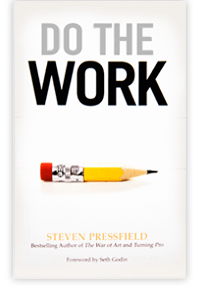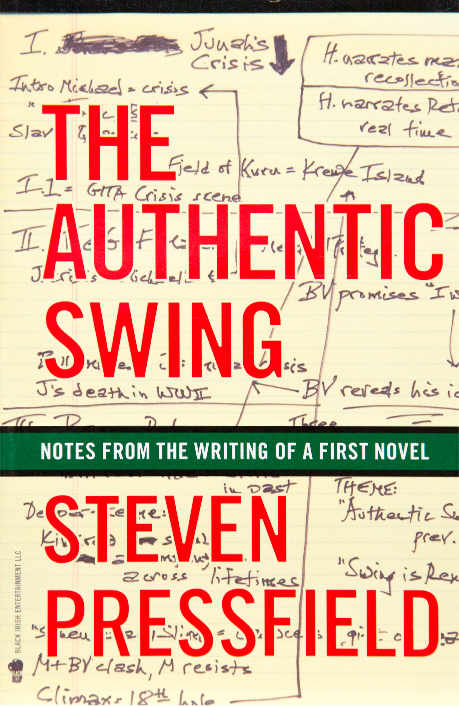Tribal Engagement Tutorial: Mental Models

Having your head in the game requires accepting that your perception of reality might not be correct.
Sun Tzu wrote:
Know the enemy and know yourself; in a hundred battles you will never be defeated.
How do you know if you have the correct understanding of your opponents and allies, as well as an understanding of how your own world plays into your understanding of others?
We put this question to Major Jim Gant and William “MAC” McCallister.
Mental Models
MM: Mental models are assumptions about the world. A mental model describes events and gives meaning to cause and effect relationships. It predisposes us to act in certain ways and to expect certain results. Our mental models filter information (called selective perception) that influences our approach to problem solving and the way we use information.
Each soldier and Marine must recognize and appreciate the fact that we see the world based on our own unique culture, attitudes, emotions, values and authority. As a member of an expeditionary force you will encounter people and cultures that differ markedly from our own. The hardest task is to lay our cultural lenses aside and to gain an appreciation of the “others” cultural operating environment.
JG: Our personal mental models are a result of our past experiences and current knowledge, and determine how we will act or respond toward any given situation. Our perception of events or data that we internalize, gives life to our actions. As an example, an academic’s idea of tribal engagement, which has evolved from reading history and experiences of others, will be much different those who have lived, fought, and built relationships as ODA 316 did with Sitting Bull and his people. Being immersed in the cultural, day-to-day living and experiencing the heart and soul of a people is much different than reading about it. More information and experiences will modify and change a person’s mental model about any given topic.
MM: At some point, we’ve all had the great pleasure of being chastised by the enlightened few for “getting it wrong” because our life experiences don’t agree with or reflect some great thinker’s notion of what the world “ought” to be. We become trapped by personal mental models when we focus on how the world “ought” to be. We have to focus on the way it is.
JG: We can’t assume that we know the motivations behind the way people act, but we can assume that motivations exist. In Afghanistan, there are century old tribal conflicts that are hidden only because of greater, outside threats. These will reemerge once one of the contenders [US vs AQ/TB] begins to take a commanding lead. How aware of these alliances are we when we pick our friends? What is the why behind the how different tribes fight? Within ourselves, we also have to consider our own cultural operating codes. For instance, there are tactical, operational, and strategic models. Now, these models will overlap, and variables at one level can have a major impact on other variables at other levels. How do these, in turn, mesh or clash with the tribes on the ground?
MM: The cultural operating codes (cultural op codes) and coordinating messages (coord messages) mental model is based on the premise that from simple rules emerge complex social dynamics and, over time, distinct patterns of behavior. They are simple assumptions for “how” an area of operation (AO) works and identify the “why” that shapes cause and effect relationships. The two coord messages are “what have you done for me lately and what will you do for me tomorrow?” and “no stability without us.” These communicate intentions to cooperate or compete. Structuring the analysis by applying the four cultural op codes and two coord messages provides for a more fitting appreciation of the human terrain and supports the tailoring of strategic initiatives and operational and tactical tasks.
The following is a story from Captain Thomas Daly, a Marine who was in Ramadi during the Awakening. Watch for the operating codes and the coordinating messages:
Three months into my deployment in Anbar’s capital, Ramadi, I sat at what I thought was just another battalion-level mission confirmation brief. My first six battalion-sized operations into insurgent-controlled patrol sectors weren’t very successful. They were characterized as clear or sweep missions and they didn’t do much to reduce the 20-to-30 attacks a day against coalition forces, or stop IEDs from being planted at an alarming rate. Even when we detained the military-aged-males at our target houses, less than 5% were prosecuted.
However, this was not just another mission. When 1/9 Infantry’s battalion commander reviewed our list of targeted individuals, he directed us to detain the regional sheikh. Then he instructed us to find and recruit the sheikhs of the regions neutral sub-tribes (none of them were considered friendly at the time). As the company’s intelligence officer, which was a duty obtained by direction, not training; I was surprised to receive these tasks. Previous missions were focused on target buildings, i.e., who may or may not be in them. There was no thought to local atmospherics or who the local power holders were. That was left for somebody at battalion or brigade to figure out. We simply cleared the objective areas, detained suspicious individuals, and transferred them over to military intelligence at the end of the mission. Yes, we found insurgent caches and engaged the enemy when he revealed himself, but in terms of reducing violence we were not having any success.
A couple of days later, we executed the first-large scale operation focused on the populace, not the enemy, in our deployment. We successfully created a power vacuum by detaining the al Qaeda controlled sheikh of the region. Two days later we allied ourselves with a small group of ex-Baathist fighters. Our combat effectiveness immediately increased. With their assistance, 95% of our detainees were being prosecuted. We detained the #2 HVI for Anbar province. And, at the same time, violence sky rocketed. Our casualties began to mount, but so did the local populace’s. Al Qaeda was determined to figure out who the masked Iraqis assisting us were so they brutally interrogated members of the surrounding sub-tribes. It was a colossal error. They lost the support of the people. Two months after our first mission focused on the populace, those same citizens revolted against al Qaeda. A week of brutal Iraqi-on-Iraqi violence encompassed the region. When it was all said and done, al Qaeda was gone.
Once the Marines of 1/9 Infantry started to think in terms of local atmospherics, they intuitively began to communicate intent within the target audiences’ cultural frame of reference. The operational objective was to reestablish governmental authority. The supporting tactical tasks were to ‘isolate’ the insurgent alliance network, ‘disrupt’ or sever the patronage relationship, and enlist the ‘relevant population’ to assist U.S. and Iraqi government security forces in the area. The Marines did this by exploiting the tendency of rival groups to segment by aligning themselves with ‘a small group of fighters’ and the community these fighters represented to fight against al Qaeda in Iraq (AQI). The local fighters sought to reclaim ‘territory’ lost to AQI and its local allies. The Marines strengthened this alliance via a patronage relationship. The shame and honor code served as the framework to exchange credibility, legitimacy and prestige between the Marines and the relevant population.”
The following is excerpted from Mr. McCallister’s “COIN and Irregular Warfare in a Tribal Society” primer:
a. A mental model is an explanation of someone’s thought process for how something works in the real world and based on culture, attitudes, emotions, values, authority, persuasion and or coercion.
b. Each soldier and Marine must recognize and appreciate the fact that we see the world based on our own unique culture, attitudes, emotions, values and authority. As a member of an expeditionary force you will encounter people and cultures that differ markedly from our own. The hardest task is to lay our cultural lenses aside and to gain an appreciation of the “others” cultural operating environment.
c. Define to what extent you understand your own mental process. How good are your insights in how you weight evidence in making judgments.
- Studies show that individuals assume an implicit “mental model” consisting of fundamental beliefs and assumptions. These fundamental beliefs and assumptions for sake of mental model development are called variables.
It follows that:
- An individual should be able to identify and describe the mental variables they consider most important in making judgments.
- Cognitive studies show that individuals tend to overestimate the importance of variables that have only a minor impact on their judgment and underestimate the extent to which their decisions are based on a few major variables.
- In short, people’s mental models are simpler than they think.
- As a matter of fact it is seldom more than one or two mental variables that are considered at any given time when assessing a given situation
- This revelation helps explain why additional information does not normally improve predictive accuracy. We tend to confirm or deny information in accordance with our existing mental model.
- Accuracy of judgment depends almost exclusively upon precision of the mental model for there is little other basis for judgment.
d. Describe your own mental model. An example of a very simple mental model is Boyd’s Observe, Orient, Decide, and Act (OODA) Loop.
e. What are your mental variables when you contemplate events in Iraq or Afghanistan; provinces or tribal society?
f. Which variables influence your mental model for how you see, perceive and experience the culture of the operating area?
Mental Model Development
The social contract defines the limits of power and social responsibilities between individuals, groups and governance. It is the logical start point to gain an appreciation for the distribution of power in a given society and the critical first step in determining how best to shape behavior.
Social Contract
- The social contract is an implied agreement by which people form nations and maintain social order.
- It is an agreement by which individuals and groups give up rights to a form of government so as to secure social order.
- Tensions exist between governmental sovereignty, communal autonomy and individual liberty.
- The social contract does not provide for rights that are “natural” or permanent. Rights are only legitimate to the extent that they serve the general interest
- Arguments can be made for a natural right of rebellion in case the social contract leads to tyranny.
- Fighting is a form of negotiation.
Political Formula
- The political formula is the logical beginning and foundation of a political order. The entire legal and social structure of the state is built upon a specific political order.
- No political formula can be scientifically proven to be correct. Every political formula is fiction. Only the force which the political formula exerts and expresses as political faith is real. The political formula is taken to be correct, true and necessary by those who believe in it and uphold it.
- A political formula which does not correspond to the desires and efforts of the people is useless. Those who rely on the political formula’s legitimacy and associated force lose their power i.e. that influence which allows them to impose their will.
- A political formula without legitimacy is mere legality. Yet, the political formula seeks to survive by virtue that it exists.
- Legitimacy is derived from differing political formulas which the various actors seek to realize. Every revolution bequeaths legitimacy once its political formula is believed.
U.S. political formula
- The American political formula is based on the idea that authority is derived from “the people” and that everyone who belongs to this order is called upon to participate. This participation is expressed in elections and votes in which the decisions of the majority are delegated to the appropriate authority, according to directives from below.
It follows that:
- The government represents the will of the people and is held accountable for its actions.
It further follows that this mental model might assume that COIN and irregular warfare is primarily a struggle between:
- The government fighting against the insurgency for the hearts and minds of the people.
Political Formula in a tribal society
a. The primary building block is the group, not the individual.
b. Competition for access to limited resources and influence is between a multiplicity of compact groups – ethnic, sectarian, economic-and tribal all striving separately and suspicious of each other.
c. The state as an institution and the territory it encompasses represents a “political field” or arena in which groups compete for influence and resources. It is a power-sharing system that includes urban and rural, sectarian, political and tribal groupings.
d. The focus of each group is to survive and prosper and they can do so only if they preserve and reinforce the corporate pattern.
e. The focus is on the tribe or the community of interest. The tribe or the community of interest succeeds or fail as a group.
f. Community of interest is defined as any temporary or long-term alliance to achieve a common goal.
Key Points
a. Does the current mental model of “the” government fighting against “the” insurgency for the hearts and minds of “the” people express the stylized way of fighting and peacemaking in Iraq or Afghanistan?
b. Does the current COIN and irregular warfare mental model support the development of appropriate tactics, techniques and procedures (TTP) to accomplish your operational and tactical objectives within the cultural frame of reference of the target audience?
Our mental model provides the foundation for appropriate action. If the mental model clashes with the cultural operating environment then you should change the mental model to better reflect the cultural frame of reference of the target audience.




Fortunately, we are able to deal in “fuzzy” logic. This is not yes/no, but (perhaps subconsciously) assigning a value from false through maybe to true to data; the scale could be as complex as desired.
In the context of this post, one’s Mental Model is also influenced by your own innate ability to be back off a bit and view all your data as objectively as possible so you can assign each data point it’s own value on this gradient scale. I’d say this ability is usually is not often used. After all, my mother always told me, “(favorite hate target) are really bad and shouldn’t be allowed to be around.”
The ration of perceived/measured IQ isn’t necessarily a measure of this ability, either. Generality: I’ve known quite a few people who operate quite intelligently, but have tremendous blind spots in which they do zero evaluation.
This from today’s New York Times reveals you have been on the right track since you named this blog!
http://www.nytimes.com/2010/01/31/weekinreview/13rohde.html?ref=world
To any interested party,
Making the rounds this week with Steve and Chief Zazai, talking with a lot of smart folks in the DC area and without getting into any detail at all at this time (and I talk about this in the paper) the goal of tribal engagement is to clear and then secure large portions of the south and east ((and the south will be different and more difficult than the east)) of Taliban and AQ. Once the tribes are “secure” (and they will do that very quickly with very limited support), we can then move on and do ALL of the things we are currently trying to do…whatever that is, good governance, infrastructure development, education enhancement, CA projects, work for pay, etc…and all the while this is going on, the TET will be putting PILLARS in place to support the tribe, so that when/if (big if) the central gov’t can ever provide anything for the tribe, “systems” will be in place to accept them. At the same time, as a TET team leader, I will be looking for opportunities to set the central gov’t up for success and report those up the chain of command. The goal of tribal engagement from an Afghan central gov’t perspective is to give them (and the ANA/ANP as well as the every day Afghan) TIME AND SPACE from the violence and coercion of the Taliban/AQ.
The goal of tribal engagement on a very large scale is not to supplant the central gov’t, but make the central gov’t reach out to the tribes. If that does not happen, whatever we do in Afghanistan – will fail.
A large scale tribal engagment strategy, if done by the right people, with the right support, and the right “top cover” is a “game changer” and would happen much quicker than anyone can imagine right now. It is NOT without pitfalls and difficulties, I know this. If the ANA/ANP was “good enough” would the Taliban/AQ have such easy access to the population? Do we think we are going to be able to build that capacity in the next ten years? Do we have ten years?
I believe the right men (very few for that matter) could have great “influence without authority” over much of the south and east region in less than two years. And this effort would have long-term sustainablility potential. Our other option, it would seem to me, is to put all our chips in with the central gov’t and the ANA, and leave the tribes out. This will end in failure – and I wonder how many of us americans would vote for that option if it were our kid’s lives we were betting on…
If I get a vote, I’ll bet on the tribes, thanks.
But, then again, I am no expert. Just one guy, who has seen what ten guys and one tribe can do.
STRENGTH AND HONOR
Jim Gant
It seems that these Mental Models are exactly what is preventing the mid-level military leaders from effectively engaging the tribes in Afghanistan. This failure to engage was a problem Major Gant brought up recently during a lecture at the U.S. Naval Academy. Unfortunately this is unlikely to change in the near future since a large part of our military strategy in Afghanistan relies on conventional forces with battalion and brigade leaders who have a hard time developing a ‘hands off’ approach to engaging the tribes. As Major Gant discussed at the U.S. Naval Academy, these leaders cannot easily relinquish their control over the battle space to allow Captains and Lieutenants the necessary freedom to act.
These MM’s can be attributed to some officers continuing inability to overall adapt to a different environment that requires different tactical goals, operations and strategies than a necessarily conventional war. Furthermore, with the advent of a military designed to be ‘network’ oriented, these preventive commanders have a greater ability to micromanage and restrict their subordinates from making the necessary tactical-strategic decisions. (See P. Singer’s book Wired for War for more detail on this ‘techno over control’)